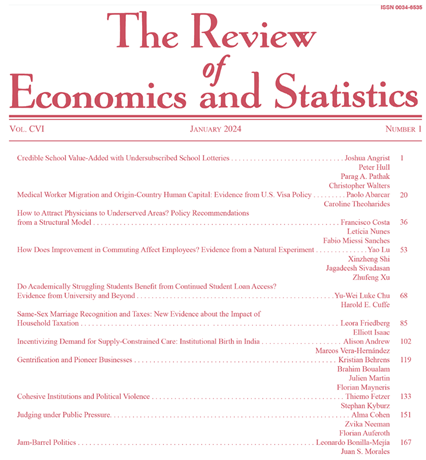Analysis of the Impact of Global Oil Prices On GDP (on the Example of the Azerbaijan Republic)
IF 6.8
1区 经济学
Q1 ECONOMICS
引用次数: 0
Abstract
Purpose of the study. The article analyzes the impact of world oil prices (external and internal factors) on the country’s GDP, considers fluctuations in world oil prices, their impact on the national economy of Azerbaijan and the integrability of these macroeconomic indexes. Materials and methods. The study of the dynamics of the functioning of time series based on the initial data revealed their non-stationarity, which does not allow creating a “qualitative” predictive model. In order to achieve the goals of the study and “improve the quality” of the model being formed, which is used to calculate predictive estimates, appropriate econometric procedures were carried out and the integrability of time series was investigated. In particular, the method of vector error correction model VECM is used. The test is based on the use of cointegration equations between variables, where lag lengths and Granger causality definitions are solved within this model. When forming the VECM model, the hypotheses put forward in the work were tested using econometric tests. The responses of the impulse function to the independent variables of the model were studied by the method of graphical representation based on the values of the model and its residuals.Results. It has been determined that the long-term equilibrium relationship between variables can be considered stable, since after short-term disturbances from shock reactions, stability is restored. The applied method of decomposition of forecast error variances to determine the influence of exogenous variables on the endogenous variable showed that the greatest uncertainty in the forecast for GDP, Azeri_light, Brent and West is given by their own changes during the first trimester of the period under consideration.Conclusion. The results obtained can be useful for identifying real trends in Azerbaijan’s GDP and determining its interdependencies with other macroeconomic variables, for determining its interdependencies with variations in energy prices based on an analysis of the dynamics of the indexes under consideration, for developing recommendations and forming directions for the longterm development of GDP.全球油价对GDP的影响分析(以阿塞拜疆共和国为例)
研究目的:本文分析了世界石油价格(外部和内部因素)对该国国内生产总值的影响,考虑了世界石油价格的波动、它们对阿塞拜疆国民经济的影响以及这些宏观经济指数的可整合性。材料和方法。基于初始数据的时间序列功能的动力学研究揭示了它们的非平稳性,这不允许创建“定性”预测模型。为了实现研究目标,并“提高”正在形成的用于计算预测估计的模型的质量,进行了适当的计量经济学程序,并对时间序列的可积性进行了研究。特别采用了矢量误差修正模型VECM的方法。该检验基于变量之间协整方程的使用,其中滞后长度和格兰杰因果关系定义在该模型中得到解决。在构建VECM模型时,对工作中提出的假设进行了计量检验。采用基于模型值及其残差的图形表示方法,研究了脉冲函数对模型自变量的响应。已经确定,变量之间的长期平衡关系可以被认为是稳定的,因为经过冲击反应的短期干扰后,稳定性恢复了。运用预测误差方差分解法确定外生变量对内生变量的影响,结果表明GDP、Azeri_light、Brent和West的预测中最大的不确定性是由它们在考虑期前三个月的自身变化所决定的。所得结果可用于查明阿塞拜疆国内生产总值的实际趋势和确定其与其他宏观经济变量的相互依存关系,可用于根据对所审议指数动态的分析确定其与能源价格变化的相互依存关系,可用于为国内生产总值的长期发展提出建议和形成方向。
本文章由计算机程序翻译,如有差异,请以英文原文为准。
求助全文
约1分钟内获得全文
求助全文
来源期刊

Review of Economics and Statistics
Multiple-
CiteScore
8.50
自引率
0.00%
发文量
175
期刊介绍:
The Review of Economics and Statistics is a 100-year-old general journal of applied (especially quantitative) economics. Edited at the Harvard Kennedy School, the Review has published some of the most important articles in empirical economics.
 求助内容:
求助内容: 应助结果提醒方式:
应助结果提醒方式:


